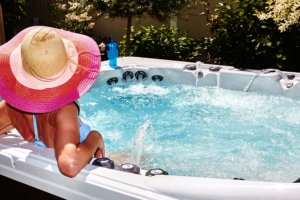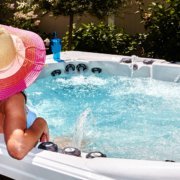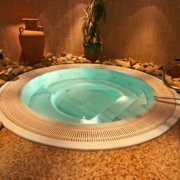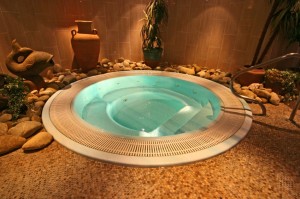 With longer evenings and the busy peak season fast approaching can there be anything better than the thought of relaxing in a hot tub, taking in the fresh air and watching the sunset over a beautiful coast or countryside view?
With longer evenings and the busy peak season fast approaching can there be anything better than the thought of relaxing in a hot tub, taking in the fresh air and watching the sunset over a beautiful coast or countryside view?
Holiday homes with a hot tub are proven to secure more bookings. However they do bring additional risks including those associated with Legionella. As the owner it’s your responsibility to ensure that your guests enjoy a healthy and safe environment. This includes being free of diseases caused by the Legionella bacteria.
It’s the less glamorous side of having a hot tub at your holiday let; with water comes Legionella bacteria which can be extremely serious and even deadly. Whilst most of us will have heard of Legionnaires disease many don’t understand the risks. However, with a death associated with a holiday lodge resort in England and another outbreak in a UK-based holiday chalet it must be taken seriously.
What is Legionnaires disease?
Legionella pneumophila is bacterium which is very common in natural water sources such as rivers and reservoirs. It can also be found in water coolers, ice machines, hot and cold water systems, shower heads and hot tubs. Legionellosis is the collective name for the diseases caused by the bacterium including Legionnaires disease which is a pneumonia type illness. You can catch it by breathing in tiny droplets of water containing the bacteria that cause the infection. This makes your hot tub a potentially perfect breeding ground for the bacteria if it’s not properly managed.
How do you control the risks associated with Legionella?
So what procedures and processes should you have in place for your hot tub to ensure that the risk of infection is minimised and your guests are able to enjoy their relaxing evening soak?
Health and Safety Executive (HSE) Guidance
The HSE has produced a very thorough document on the controls and procedures you should have in place as a hot tub owner. We’ve included a link to this document below. If you’re not already, it’s worth familiarising yourself with all of the processes mentioned in order to ensure your hot tub is kept in a clean and sterile condition throughout the summer and beyond.
- HSE advice on the control of legionella in your hot tub – to download click here.
Some key points in maintaining your hot tub
Conducting a risk assessment
Although these can seem like even more paperwork for your holiday cottage they’re vitally important. They help you understand how to address the risks. When it comes to your hot tub risk assessments should be undertaken by a competent person. This can be you as the owner, so long as you fully understand the system, associated risks and legislation.
It’s important to highlight that even if you don’t undertake the assessment yourself, you’re still responsible for it as the holiday homeowner, so it’s essential that it’s thorough and detailed.
Regular monitoring
The risk assessment is only ever the first step in the process; it’s important that you put in place processes that minimise the risks faced by your guests, and that these are then regularly reviewed by a competent person in order to ensure they’re effective.
As with your risk assessment, you’re ultimately responsible for these ongoing measures, so even if you do live a good distance from your home it is worth having a regular check yourself to make sure that your instructions are being delivered and implemented to the standard they need to be.
Effective training
To reduce the risk of Legionnaires disease and other infections it’s important that everyone sings from the same hymn sheet. Do you outsource the cleaning and maintenance of your holiday home and hot tub? Then you’ll need to ensure that the cleaner or company you’re using are: familiar with the procedures that you have in place, the installers guidance on cleaning and maintaining your hot tub, along with any other information they need to reduce risks effectively.
Inadequate management, communication or instruction are often the source of problems when it comes to delegating tasks like this, so make sure there’s clear and written guidance on what needs to be completed, with reviews taken on a regular basis and increased in frequency if a new cleaner or individual is made responsible for these tasks.
Our holiday home insurance includes cover for Legionellosis
We believe in giving our holiday homeowners the broadest level of cover possible. This is why we include cover against accidental bodily injury caused by Legionellosis. We recently increased the public liability extension for Legionellosis liability to provide £1m of cover*. This applies to any one period of insurance and includes associated legal fees.
* It is a requirement of this extension to cover that you adhere to the current Health and Safety Executive’s Approved Code of Practice for the prevention of Legionnaire’s Disease: The control of legionella bacteria in water systems
For more information about our specialist holiday home insurance please give our experienced team a call on 01237 429444.


